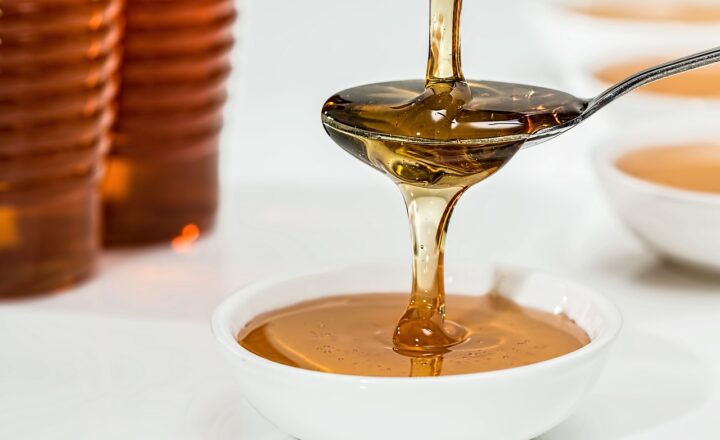Exploring the World of Raw Sugars and Why They’re Different from Refined Sugar
November 12, 2024

Sugar, an integral part of our diets, has a complex narrative that spans centuries of human civilization. As we delve deeper into the realm of sweeteners, particularly raw sugars, we begin to understand the nuances that set them apart from their refined counterparts. In this article, we will explore the different types of sugars, their processing methods, health implications, culinary uses, and much more.
—
1. The Sugar Story: From Cane to Crystals
The journey of sugar begins in the fields, primarily from two main sources: sugarcane and sugar beets. Understanding the initial extraction from these plants is foundational to grasping the differences between raw and refined sugars.
Sugarcane*: A tropical grass that thrives in warm climates, sugarcane is harvested and crushed to extract its juice, which is then boiled to evaporate water and crystallize sugar.
Sugar Beets*: Grown in cooler climates, sugar beets are harvested, sliced, and then soaked in hot water to extract their sucrose, which is then crystallized.
What differentiates raw sugars from refined ones is primarily the processing that occurs post-extraction. Raw sugars undergo minimal processing, which leaves much of their natural flavors and nutrients intact.
—
2. Types of Sugars: What Makes Raw Sugars Unique?
Raw sugars come in several varieties, each offering unique flavors, colors, and uses in cooking.
Turbinado Sugar*: Often referred to as raw sugar, it retains some of the natural molasses, giving it a light brown color and a subtle caramel flavor. It’s minimally processed and usually used as a sweetener in beverages and baking.
Demerara Sugar*: This sugar has larger crystals and a golden-brown color, with a rich, buttery taste. It is often used in coffee and as a topping for baked goods.
Muscovado Sugar*: Perhaps the least processed, muscovado retains a high amount of molasses, leading to a dark brown color and a strong, complex flavor. It is popular in desserts, marinades, and savory dishes.
In contrast, refined sugar, typically referred to as white sugar, undergoes significant processing. This often strips away molasses and other natural nutrients, resulting in a product that is more concentrated and devoid of the subtle flavors found in raw sugars.
—
3. The Nutritional Profile: Raw vs. Refined
When comparing raw and refined sugars, the nutritional profile reveals striking differences.
Raw Sugars*: These contain trace amounts of minerals such as calcium, potassium, iron, and magnesium, due to their minimal processing. Their higher molasses content provides antioxidants, which can contribute to overall health.
Refined Sugars*: While they are predominantly pure sucrose, refined sugars lack essential nutrients and antioxidants. They provide empty calories, which is a concern for health-conscious consumers.
However, it’s important to note that both raw and refined sugars should be consumed in moderation. Excessive sugar intake is linked to various health issues, including obesity, diabetes, and heart disease.
—
4. The Culinary Applications of Raw Sugars
Raw sugars introduce distinctive flavors and textures to culinary creations. Here’s how they can be employed in various scenarios:
Baking*: Turbinado and demerara sugars can be used to enhance the browning and flavor of baked goods. Their unique taste adds depth to cakes, cookies, and bread.
Savory Dishes*: Muscovado sugar is perfect for marinades, glazes, and sauces, as its rich flavor profiles complement meats and vegetables.
Sweetening Beverages*: The larger crystals of raw sugars dissolve slower, making them ideal for sweetening beverages like iced tea, coffee, and cocktails while adding a touch of character.
—
5. Raw Sugars in the Health Conversation
There is an ongoing debate about whether raw sugars are healthier than refined sugars. While raw sugars may contain some minerals and antioxidants, they are still sources of sugar and can have similar effects on blood sugar levels. Moderation is key.
*Glycemic Index (GI)**: Raw sugars generally have a lower glycemic index than refined sugars, meaning they might cause a slower rise in blood sugar. However, the difference is not significant enough to make them a health food.
Natural Sweeteners*: For those seeking natural alternatives, consider options like honey, agave nectar, or stevia, which provide sweetness with additional health benefits.
—
6. Conclusion: A Sweet Balance
In exploring the world of sugars, it becomes evident that raw sugars present a richer flavor and slight nutritional advantages over refined sugars. Their unique characteristics make them appealing for baking and cooking, while they serve as a reminder of the importance of moderation in our diets. As we navigate our choices between sweeteners, understanding the differences between raw and refined sugars allows us to make informed decisions about our health and culinary practices.
The bottom line is that while indulging in sweet treats can bring joy, being mindful of the types of sugars we consume can contribute to a healthier lifestyle. Embracing the flavors of raw sugars can add a new dimension to our everyday cooking and remind us of the rich history and complexities behind the sweetener we often take for granted.







